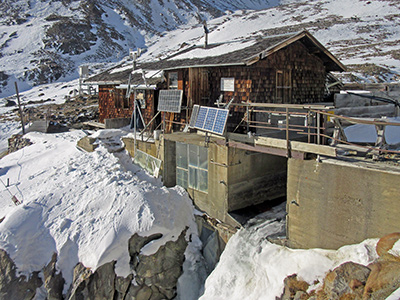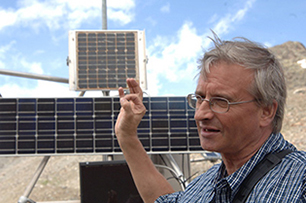
Interactive Soundart Projects
___Calling the Glacier________________________________

Glaciers as sensitive indicators of climate change: enhanced water yield from Vernagtferner, Oetztal Alps, Austria,
by Dr. Ludwig Braun, Direktor of the Commission for Glaciology, Bavarian Academy of Sciences and Humanities, Munich www.glaziologie.de
The Vernagtferner has been observed carefully since the year 1600, as it had shown numerous rapid advances into the Rofen valley, causing the formation of an ice-dammed lake which often drained catastrophically. The first detailed map of Vernagtferner was drawn in 1889 by S. Finsterwalder, with an accuracy comparable to modern maps, and since then glacier volume changes have been calculated, describing quantitatively the general retreat of this glacier since 1850 due to global warming. These results demonstrate the long history of scientific investigations of glacier behaviour and its relationship to climate conditions in the Ötztal Alps, Austria.
Annual glacier mass balances of the Vernagtferner have been determined by the Commission for Glaciology since 1964 using the direct glaciological method. Precipitation and other climatological variables, as well as discharge have been measured since 1974 at the gauging station “Pegelstation Vernagtbach”. This high alpine basin has an area of 11.4 km2, extends from 2640 m to a maximum elevation of 3630 m, and the glacier area decreased from about 10 km2 (88 %) in 1964 to 8 km2 (70 %) in 2006.
The drastic changes in runoff conditions demonstrate the impact of global change in this high alpine environment, and the monitoring efforts should be continued so that we have the footprint of this global experiment in progress also in the future. It also shows that we are presently living in a period of excess water yield from these high mountain regions, which will eventually fade away if the glaciers should disappear. Most alpine rivers then will run dry during hot summers with scarce precipitation – a situation that we are experiencing already today in the Po River basin, just to name one example.

Gauging station of the Baverian Academy of Sciences.

Dr. Ludwig Braun, head of the Glaciology Commission
(until 2017)